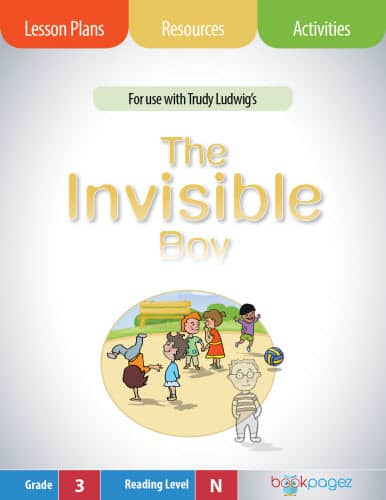
Use The Invisible Boy by Trudy Ludwig to strengthen your students' comprehension skills, build their vocabulary, and help them understand how words work.






This word work lesson plan and set of teaching resources use The Invisible Boy by Trudy Ludwig as a springboard for instruction focused on contractions.
By anchoring word study to the text, students will benefit from seeing how contractions are used inside of the text before engaging in both guided and independent practice with words.

This set of vocabulary development resources for The Invisible Boy highlights the words that are most important for students to know and understand while reading the book. Through engaging in fun word games, matching words to definitions and pictures, and practicing how to categorize words, students will develop the vocabulary necessary to comprehend this story and many others.




